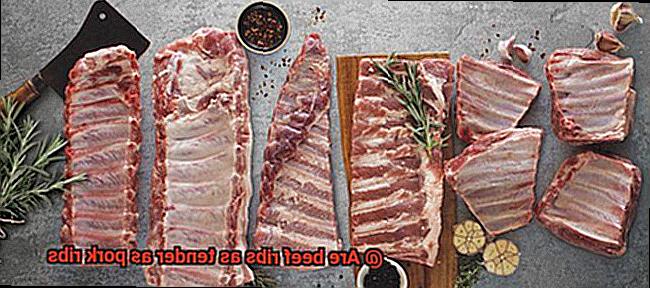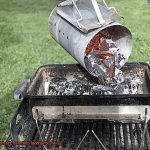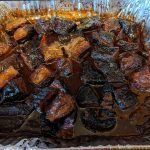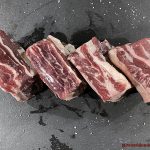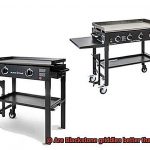Are you a meat lover who’s always caught in a sticky situation when it comes to choosing between beef and pork ribs? You’re not alone. The age-old question of whether beef ribs can match the tenderness of pork ribs has been an ongoing debate among meat enthusiasts. But fear not, we’re here to settle this once and for all.
When it comes to ribs, both beef and pork have their unique flavors and textures that set them apart. Pork ribs are commonly known for their soft, juicy, and tender meat, while beef is celebrated for its robust flavor and meatier texture. But can beef ribs really be as tender as their pork counterparts? That’s where the debate begins.
In this blog post, we’ll be diving deep into the world of beef and pork ribs to uncover the factors that affect their tenderness. From the cut of meat to cooking methods and preparation techniques, we’ll leave no stone unturned. We’ll also explore the differences in taste, texture, and nutritional value of both types of ribs so you can make an informed decision next time you find yourself at a crossroads.
Get ready for a mouthwatering journey as we reveal whether beef ribs can indeed compete with the tenderness of pork ribs. So sit back, relax, and prepare to become a rib connoisseur.
Contents
Differences between Beef and Pork Ribs
Well, you’ve come to the right place. These two popular rib choices have their own unique features that make them stand out from each other.
Let’s start with beef ribs. These meaty cuts are larger than pork ribs, which means they take longer to cook. However, if cooked low and slow, the connective tissue breaks down, resulting in incredibly tender and flavorful meat. Choosing the right cut of beef is crucial for making delicious beef ribs. For instance, short ribs and beef back ribs are naturally more tender than other cuts like beef spare ribs or brisket. Additionally, marbling plays a crucial role in the tenderness of beef ribs, so look for cuts with good marbling for a juicier and more flavorful result.
Now, let’s move on to pork ribs. These smaller cuts are naturally more tender than beef due to their higher fat content and smaller size. Pork ribs also have a sweeter flavor compared to beef ribs, thanks to the natural sugars in the meat. Cooking pork ribs is more flexible since they can be cooked quickly at high heat or slow-cooked at low heat for a more fall-off-the-bone texture.
To sum it up, both beef and pork ribs can be mouth-watering when cooked correctly. However, it’s essential to note the differences between the two when choosing which type of rib to grill. Here are some key differences between beef and pork ribs:
- Beef ribs tend to be larger and require more attention when cooking.
- Beef ribs have more fat and connective tissue than pork ribs.
- Pork ribs are generally smaller and more tender than beef ribs.
- Pork ribs have a sweeter flavor due to the natural sugars in the meat.
- Pork ribs can be cooked quickly or slow-cooked for different textures.
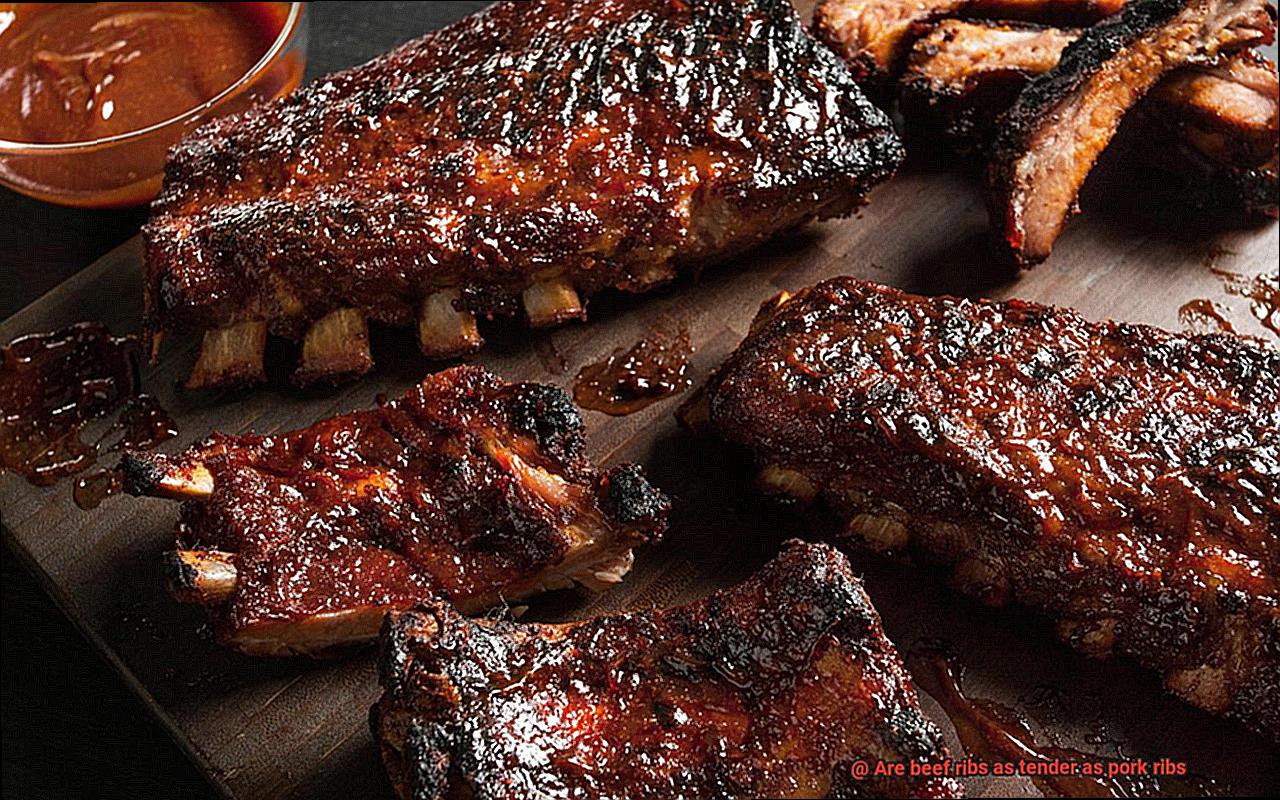
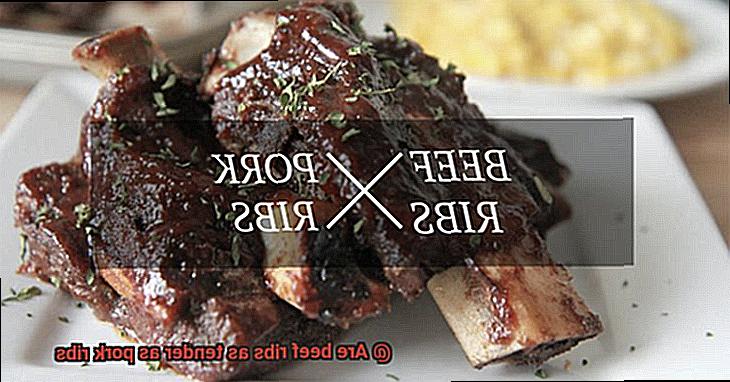
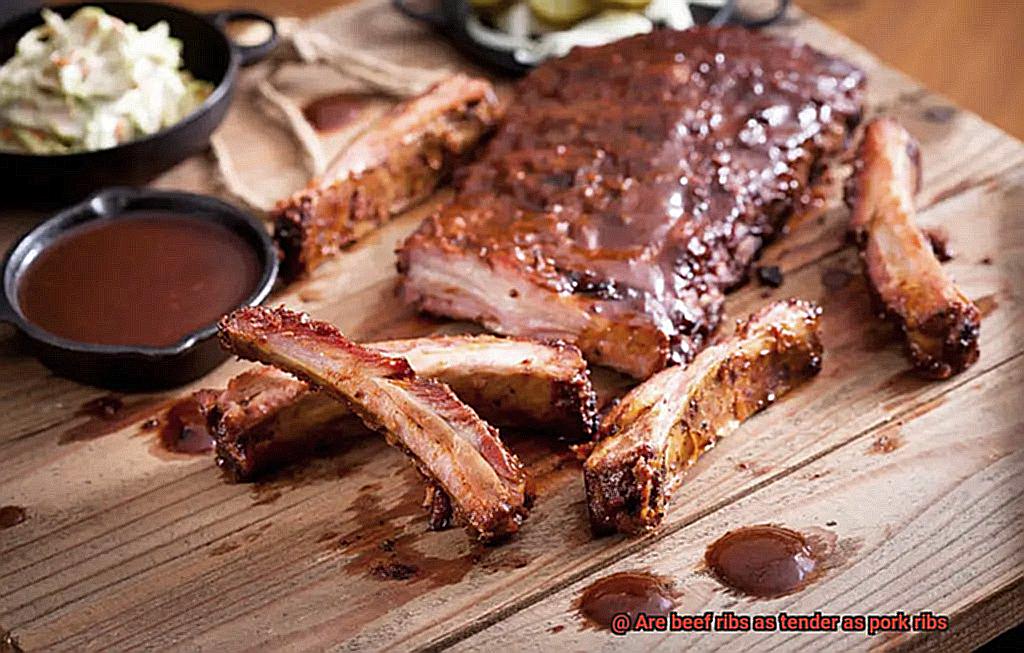
Factors That Affect the Tenderness of Beef Ribs
It’s time to master the art of cooking beef ribs to perfection. The tenderness of beef ribs depends on several factors, including the cut of meat, the cooking method, and the time and temperature of cooking.
First things first, let’s talk about the importance of choosing the right cut of meat. Short ribs, back ribs, and chuck ribs are all great options for tender beef ribs. These cuts have more fat and connective tissue, which contribute to their tenderness when cooked slowly at low temperatures. So don’t be afraid to ask your butcher for advice on which cut to choose.
Next up, cooking method is crucial for achieving tender beef ribs. Slow cooking methods such as smoking or braising can help break down the connective tissue in the meat, resulting in juicy and flavorful beef ribs. On the other hand, grilling at high temperatures can be tricky and may result in tough and chewy meat if not cooked correctly.
Last but definitely not least, time and temperature play a critical role in the tenderness of your beef ribs. Slow-cooking at low temperatures is key to breaking down the collagen in the meat, allowing it to become tender and juicy. So take your time and be patient. Cooking at high temperatures for short periods can cause the meat to become tough and dry.
To sum it up, here are some key takeaways:
- Choose short ribs, back ribs, or chuck ribs for tender beef ribs
- Try slow cooking methods like smoking or braising
- Be patient and cook at low temperatures to break down collagen
- Avoid high temperatures for short periods that may result in tough meat
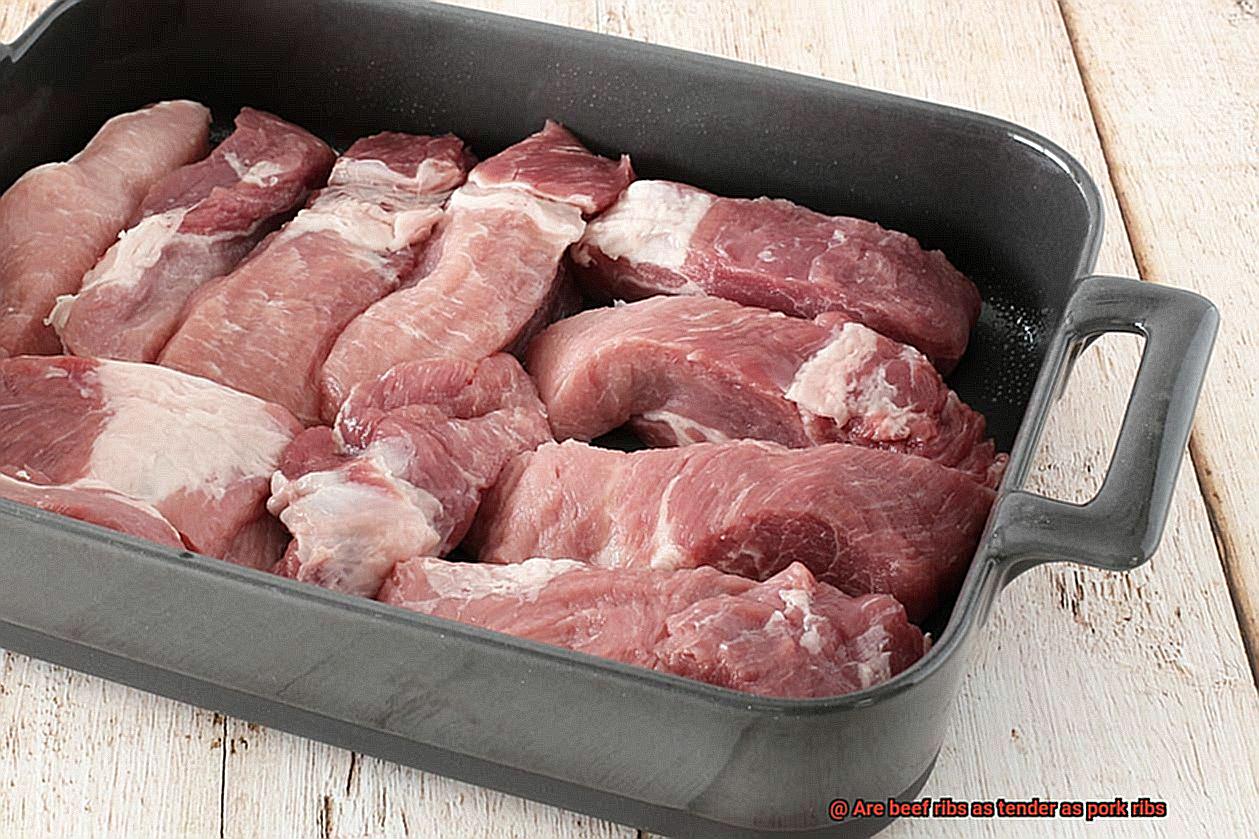
Cooking Techniques for Tender Beef Ribs
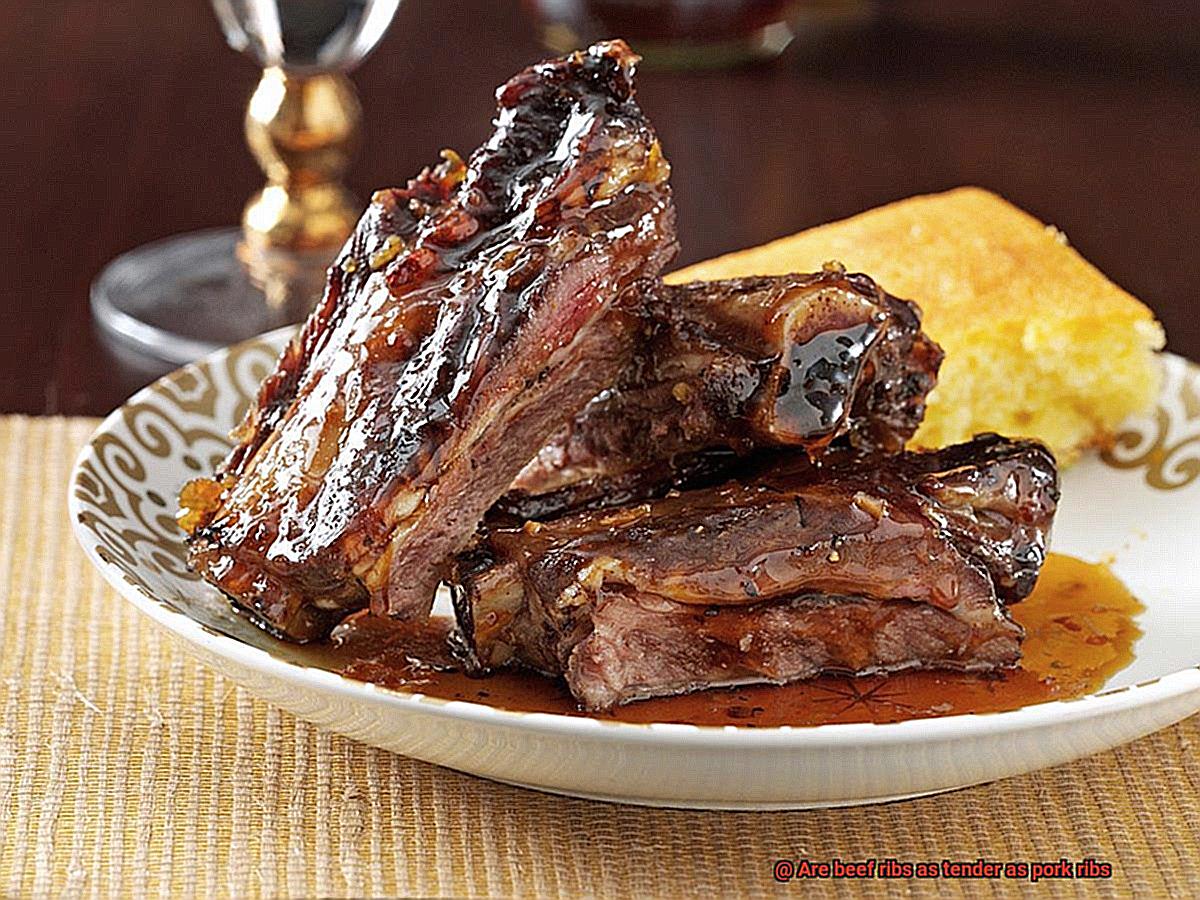
Cooking tender beef ribs may seem like a challenge, but with the right techniques, you can create succulent and flavorful ribs that rival even the best pork ribs. Here are some essential tips for cooking tender beef ribs:
Low and slow is the key to tender beef ribs. The ideal cooking method is slow-cooking at a low temperature, allowing the meat to break down and become tender. A smoker or slow cooker is perfect for achieving this result.
Marinating your beef ribs before cooking helps to tenderize the meat and adds flavor. A simple marinade of oil, vinegar, garlic, salt, and pepper is a great starting point, but don’t be afraid to add other seasonings like paprika or cumin for extra flavor.
When cooking beef ribs on a grill or smoker, it’s crucial to monitor the temperature carefully. The ideal temperature range for smoking beef ribs is between 225°F and 250°F. Basting with a flavorful liquid like apple juice or beer during the cooking process will keep the meat moist and add extra flavor.
Finally, let your beef ribs rest before serving. Allowing them to rest for at least ten minutes allows the juices to redistribute throughout the meat, making it even more tender and flavorful.
Marbling: The Secret to Juicy Beef Ribs
As an expert on marbling, let me tell you that it’s the secret to juicy and tender beef ribs that will leave you wanting more.
Marbling refers to the fat content within the meat, which is distributed throughout the muscle fibers. When it comes to beef ribs, those with more marbling tend to be more tender and flavorful than those with less marbling. The reason behind this is that the fat within the meat melts during cooking, resulting in a tender and juicy end product. However, it’s crucial to note that too much marbling can make the meat too greasy and fatty. So, balance is key.
Interestingly, marbling in beef ribs differs from other cuts of meat because it’s located between the muscle fibers instead of surrounding them. This unique positioning allows the fat to melt more easily during cooking, resulting in an even more tender and juicy end product.
Now, what about pork ribs? Although they usually have less marbling than beef ribs, they have a higher fat content overall. This can make them more tender than beef ribs but also greasier. Additionally, the type of pork rib plays a role in tenderness – baby back ribs tend to be more tender than spare ribs because of their smaller size and higher meat-to-bone ratio.
Different Cuts of Beef Ribs
Then, it’s time to learn about the various cuts of beef ribs that you can grill or smoke to perfection. As an expert in different cuts of beef ribs, let me guide you through the differences between popular cuts like short ribs, back ribs, and beef plate ribs.
Let’s begin with the short rib, which is taken from the lower portion of the cow’s ribs. This cut is known for its meaty and flavorful taste, making it a favorite among meat enthusiasts. Whether you prefer to smoke, grill, or braise it, short ribs will reward you with tender and juicy meat that pairs well with various sauces and seasonings.
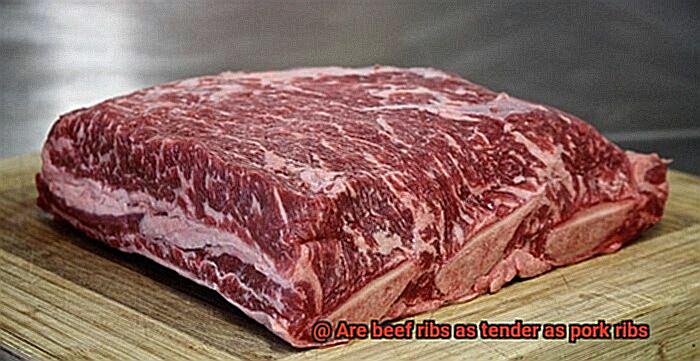
Moving on to the back rib, this cut comes from the upper portion of the cow’s ribs and is typically smaller and less meaty than short ribs. While back ribs can be grilled or smoked, they require extra attention to remain tender. However, when cooked correctly, back ribs can also be quite tender and flavorful, though they may not have as much meat on them as other cuts.
Last but not least, there is the beef plate rib. This cut comes from the lower portion of the cow’s rib cage and is known for its large size and meaty texture. However, it can be quite tough if not cooked properly. Beef plate ribs are often smoked for several hours until they reach an internal temperature of around 200 degrees Fahrenheit. When done right, this cut can be incredibly tender and flavorful.
Why Pork Ribs are More Tender Than Beef
Firstly, the meat fibers in pork ribs are shorter and thinner than those in beef ribs. This means that they are easier to break down during cooking, resulting in a more tender end result. Additionally, pork ribs have a higher fat content than beef ribs, which helps to keep them moist and tender throughout the cooking process.
But it’s not just about the meat itself – cooking time plays a crucial role as well. Pork ribs require less time to cook than beef ribs due to their smaller size and thinner meat fibers. This means that if you’re not careful, beef ribs can easily become tough and chewy if overcooked. Pork ribs, on the other hand, are less likely to suffer from this issue.
Lastly, let’s talk about the cut of meat used for each type of rib. Pork ribs are typically cut from the side or belly of the pig while beef ribs are usually cut from the ribcage of the cow. The muscles in the belly area of a pig are used for movement, which means they contain less connective tissue than the muscles in a cow’s ribcage. As a result, pork ribs are naturally more tender than beef ribs.
So what does all this mean for grill enthusiasts? By understanding the factors that make pork ribs more tender than beef ribs, you’ll be able to achieve perfectly cooked and tender ribs every time. Here’s a quick recap:
- Pork ribs have shorter and thinner meat fibers, making them easier to break down during cooking.
- Pork ribs have a higher fat content, which helps to keep them moist and tender.
- Pork ribs require less cooking time than beef ribs due to their smaller size and thinner meat fibers.
- Pork ribs are cut from a different part of the animal than beef ribs, resulting in naturally more tender meat.
Tips for Cooking Perfectly Tender Pork Ribs
Here are some tips to ensure your next batch of ribs is juicy, flavorful, and falls right off the bone.
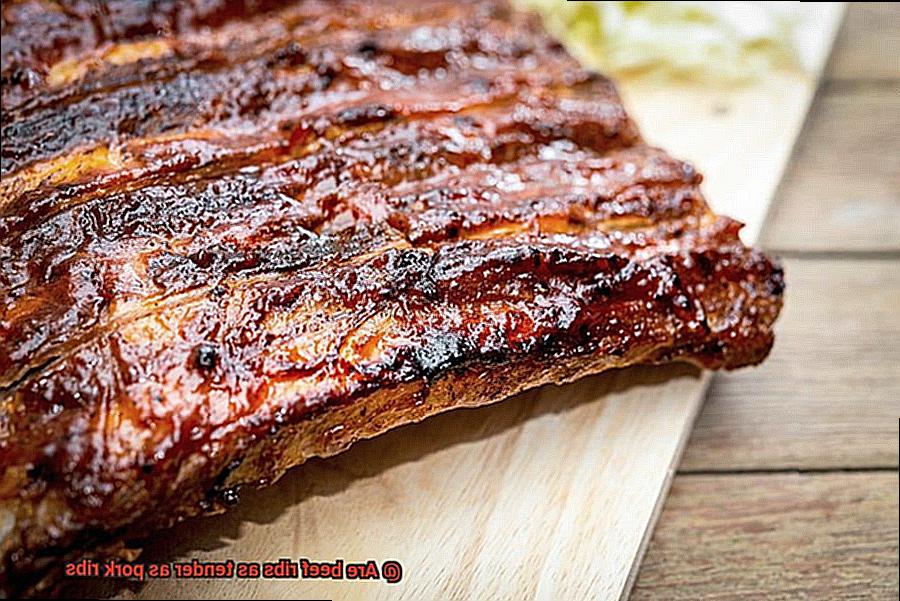
Choose the Right Cut of Ribs
When shopping for pork ribs, opt for baby back ribs as they are the most tender and easiest to cook. Spare ribs are a good option too, but they require more attention due to their higher fat content and tougher connective tissue.
Prepare the Meat Properly
Before cooking, remove the tough membrane on the underside of the ribs. This can be done by using a knife to slide under the membrane and then using a paper towel to grip and pull it off. Marinating the ribs before cooking can also help break down the tough fibers in the meat. A simple marinade of apple cider vinegar, brown sugar, and Worcestershire sauce can work wonders.
Cook Low and Slow
The secret to perfectly tender pork ribs is to cook them low and slow. This means cooking them at a low temperature (around 225°F) for several hours. This allows the meat to cook slowly and absorb flavors from any wood chips used. For extra tenderness, wrap the ribs in foil or butcher paper during the cooking process. This method, known as the “Texas Crutch,” locks in moisture and further breaks down the connective tissue.
Let Them Rest
After removing the ribs from heat, let them rest for at least 10-15 minutes before cutting into them. This allows the juices to redistribute throughout the meat, resulting in a more flavorful and tender rib.
Serve with Sides and Enjoy.
Now that your pork ribs are perfectly tender, it’s time to serve them up with your favorite BBQ sauce and sides such as coleslaw, cornbread, or baked beans. Enjoy.
hTt3wQp2dbQ” >
Conclusion
In the world of meat lovers, the debate over whether beef ribs can match the tenderness of pork ribs has been ongoing. But let’s be clear – both types of ribs have their unique flavors and textures that set them apart.
Pork ribs are known for their soft, juicy, and tender meat, while beef is celebrated for its robust flavor and meatier texture. When it comes to beef ribs, choosing the right cut of meat is crucial for making delicious beef ribs. Short ribs and beef back ribs are naturally more tender than other cuts like beef spare ribs or brisket. Additionally, marbling plays a crucial role in the tenderness of beef ribs.
But don’t forget about cooking methods. Slow-cooking at low temperatures is key to breaking down the collagen in the meat, allowing it to become tender and juicy. On the other hand, pork ribs require less time to cook than beef ribs due to their smaller size and thinner meat fibers. They also have a higher fat content than beef ribs which helps keep them moist and tender throughout the cooking process.
So whether you choose to grill or smoke your rib choice, understanding these factors will help you achieve perfectly cooked and tender results every time. Remember that both pork and beef can be mouth-watering when cooked correctly.
In short, there’s no clear winner when it comes to tenderness between pork and beef ribs.

